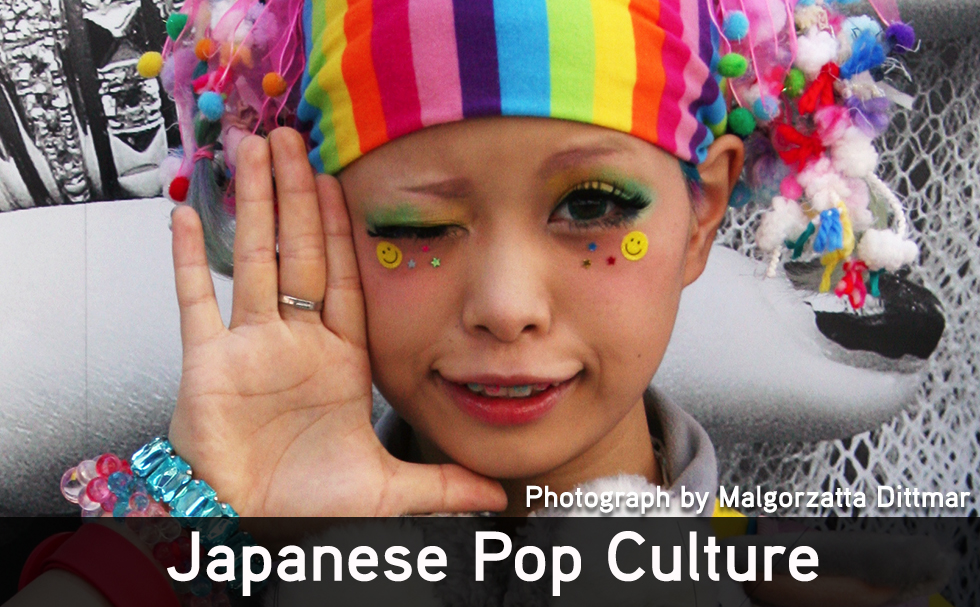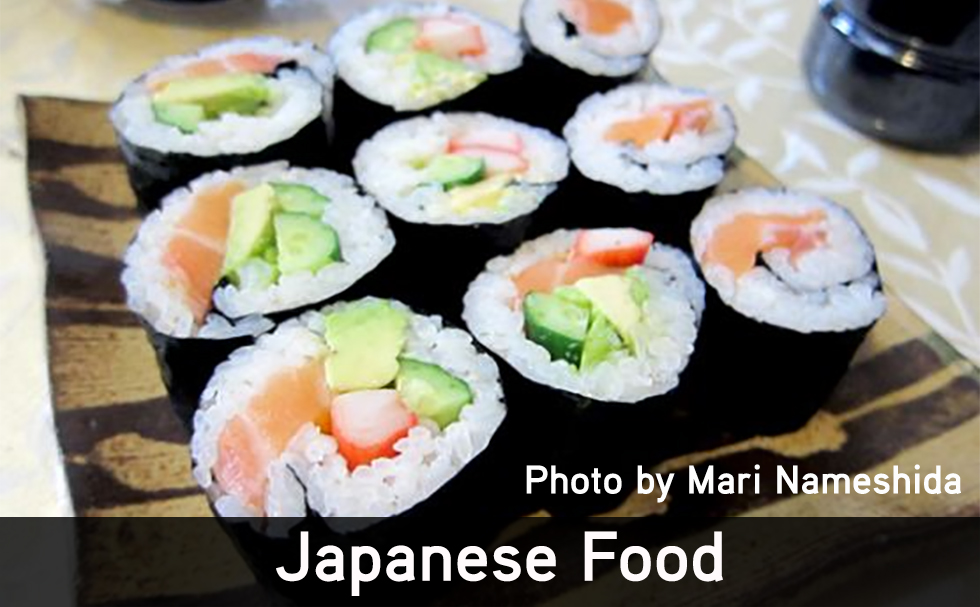Tokyo Journal's Top 10 Rankings 2016 Final
Tokyo Journal's 2016 Polling Results

What are your favorite things about Japan and Japanese culture?
Readers voted. Readers decided!
In April of 2016 Tokyo Journal announced the first ever Top 10 Ranking for the reader's favorite Japanese entertainment icons, food, pop-culture, and travel locations. Over the course of 2016 we asked Tokyo Journal readers to vote for their favorite things in Japanese entertainment, food, pop-culture, and travel locations. This first year proved to be successful with over 500,000 votes submitted by readers from all over the world. Here are the top 3 winners for each category and stay tuned for the 2017 rankings.
Categories
> Japanese Entertainmant
> Food in Japan
> Japanese Pop Culture
> Japan Travel
Japanese TV & Dramas
Best J-Drama Actress
1. Satomi Ishihara
2. Akari Hayami
3. Haruka Ayase
Best J-Drama from 2015-2016
1. Flowers for Algermon
2. Mysterious Thief Yamaneko
3. From Five to Nine
Best J-Drama Actor
1. Tomohisa Yamashita
2. Takuya Kimura
3. Kazuya Kamenashi
Best J-Drama of All Time
1. Nobuta wo Produce (2005)
2. Long Vacation (1996)
3. Hana Yori Dango (2005)
Best Variety Show
1. Smap x Smap
2. Momoclo Chan
3. Shabekuri 007
Japanese Movies
Best Horror Movie
1. Ring
2. Ju-On
3. Sadako 3D
Best Japanese Movie
1. Battle Royale (2000)
2. Seven Samurai (1954)
3. Godzilla (1954)
Best Japanese Movie Actor/Actress Worldwide
1. Ken Watanabe
2. Takuya Kimura
3. Takeshi Kitano
Best Japanese Film Director of All Time
1. Hayao Miyazaki
2. Akira Kurosawa
3. Takeshi Miike
Best Akira Kurosawa Film of All Time
1. Seven Samurai
2. High and Low
3. Hidden Fortress
Japanese Music
Best J-Rock Band
1. X Japan
2. The GazettE
3. Babymetal
Best Japanese Female idol Group
1. Momoiro Clover Z
2. Morning Musume
3. *C-ute
Best Japanese Female Singer
1. Miwa
2. Yui
3. Ayumi Hamasaki
Best Male idol Group
1. SMAP
2. KAT-TUN
3. ARASHI
Best Japanese Male Singer
1. Tomohisa Yamashita
2. Gackt
3. Jin Akanishi
Japanese Sports
Best Favorite Japanese Male Athlete
1. Yuzuru Hanyu (Figure Skater)
2. Kei Nishikori
3. Kohei Uchimura
Best Favorite Japanese Female Athlete
1. Mao Asada (Figure Skater)
2. Ai Fukuhara
3. Saori Yoshida
Japanese Food
Best Street Food
1. Ramen
2. Takoyaki
3. Yakitori
Best Favorite Sushi
1. Salmon
2. Toro (Fatty Tuna)
3. Tuna
Best Japanese Sake
1. Dassai
2. Kubota
3. Hakkaisan
Restaurant in Japan
Best Theme Restaurant
1. Kawaii Monster Cafe
2. Robot restaurant
3. Maidreamin Cafe
Best Japanese Fast Food
1. Mos Burger
2. Yoshinoya
3. Pepper Lunch
Best Kobe Beef Restaurant
1. Ishida
2. Houki
3. Wakkoqu
Best French Restaurant in Tokyo
1. Les Cristallines
2. Troisgros Japon
3. Joel Robuchon
Best Italian Restairant in Tokyo
1. Pizzeria Da Napolistaca
2. Elio Locanada Italiana
3. Bulgari ll Ristorante
Best U.S. Restaurant
1. Outback Steakhouse
2. Hard Rock cafe
3. Denny's
Best Izakaya (Japanese Pub)
1. Hibiki
2. Gonpachi
3. Nihonbashi-tei
Best Mexican Restaurant
1. Fonda de la Madrugada
2. La Jolla
3. El Caliente
Best Curry Rice Restaurant
1. CoCo Ichibanya
2. Manten Curry Rice
3. Curry House TIRI TIRI
Best Tonkatsu Restaurant
1. Wako
2. Maisen
3. Katsuzen
Best Craft Brewery
1. Miyashita Sake Brewery
2. Baird Brewery Company
3. Abashiri Brewery
Best Asian Restaurant in Tokyo
1. Asian Palm
2. Monsoon Cafe
3. Mango Tree
Best Kaiseki Restaurant (Japanese Traditional Multi-Course Dinner)
1. Gion Karyo, Kyoto
2. Nakamura, Kyoto
3. Ogata, Kyoto
Best Tempura Restaurant in Tokyo
1. Tempura Kondo
2. Ten-ichi Ginza Honten
3. Tempura Motoyoshi
Best Sushi Restaurant
1. Sukiyabashi Jiro
2. Sushi no Midori
3. Sushi Dai
Best Tonkotsu Ramen Restaurant in Tokyo
1. Ichiran
2. Shibaraku
3. Botan
Japanese Sweets
Best Sweets
1. Melon Pan
2. Crepes
3. Taiyaki
Best Wagashi Shop
1. Higashiya Ginza
2. Tokyo Mise
3. Toraya Tokyo
Best Bakery & Dessert Shop
1. Sweets Paradise
2. Rose Bakery
3. Ice Monster Omotesando
Best Chocolate Snack
1. Pocky
2. Choco Pie
3. ALMOND
Japanese Anime & Manga
Best Shonen Manga
1. One Piece
2. Fairy Tail
3. Full Metal Alchemist
Best Shojo Manga
1. Akatsuki no Yona
2. Kimi ni Todoke
3. Orange
Best Kawaii Cartoon Character
1. Pika-chu
2. Totoro
3. Rilakkuma
Best Studio Ghibli Movie
1. Howl's Moving Castle
2. Spirited Away
3. My Neighbor Totoro
Best Anime 2012-2016
1. Attack on Titan
2. One-Punch Man
3. Tokyo Ghoul
Best Animated Movie
1. Wolf Children
2. Final Fantasy VII: Advent Children
3. The Girl Who Leapt Though Time
Best Anime of All Time
1. Dragon Ball Z
2. One Piece
3. Death Note
Best Gotochi Character (Regional Mascot Character)
1. Kumamon
2. Funassyi
3. Gunma-chan
Cosplay
Best Famous Cosplayer 2016
1. Touga
2. Reika
3. Linda Le(Vampy Bit Me)
Japanese Fashion
Best Harajuku Fashion
1. Galaxxxy
2. Angelic Pretty
3. 6% Doki Doki
Best Women's Fashion Brand
1. Cecil McBee
2. Olive des Olive
3. Freak's Store
Best Japanese Fashion Brand
1. Comme Des Garcons
2. Junko Koshino
3. Kenzo
Best Female Model
1. Kiko Mizuhara
2. Mirei Kiritani
3. Rola
Japanese Video Games
Best J-RPG of All Time
1. Final Fantasy VII
2. Kingdom Hearts 2
3. Persona 4
Japanese Destinations
Best Theme Park
1. Tokyo Disneyland
2. Universal Studios Japan
3. Tokyo Disneysea
Best "Day Trip" from Tokyo
1. Yokohama
2. Kamakura
3. Mt. Fuji
Best Vacation Spot
1. Kyoto
2. Ishigaki Island
3. Nara
Best Famous Landmark in Tokyo
1. Tokyo Tower
2. Shibuya Crossing / Hachiko Statue
3. Tokyo Skytree
Best Distinctive Building
1. Tokyo Station
2. Nakagin Capsule Tower
3. Omotesando Hills
Best Area for Hot Spring
1. Hakone Onsen
2. Kurokawa Onsen
3. Beppu Onsen
Best Ryokan (Traditional Japanese Hotel)
1. Takinoya
2. Shuhokaku Kogetsu
3. Hotel Hanayura
Best Ski Resort
1. Niseko Grand Hirafu
2. Fujiten Snow Resort
3. Hakuba Happo One Ski Resort
Best Japanese Architect
1. Tadao Ando
2. Kenzo Tange
3. Kisho Kurosawa
Best Place to Visit in Tokyo
1. Harajuku
2. Asakusa Temple
3. Odaiba
Best International School
1. Tokyo International School
2. The American School in Japan
3. Yokohama International School
Best Language School
1. Sendagaya Japanese Institute
2. Akamonkai
3. Coto Language Academy
Japanese Hotels
Best Five Ster Hotel in Tokyo
1. Park Hyatt Tokyo
2. Palace Hotel Tokyo
3. Imperial Hotel Tokyo
Best Hotel for Young Travelers
1. Kyoto Guesthouse Roujiya
2. Nui. Hotel & Bar Lounge
3. Hostel Haruya Aqua, Kyoto
Japanese Leisure & Recreation
Best Place to Karaoke
1. Shidax
2. Big Echo
3. Karaoke-kan
Best Game Center
1. Club SEGA
2. SEGA GiGO
3. Shinjuku Playland Carnival
Best Japanese Festival
1. Sapporo Snow Festival
2. Awa Odori Tokushima
3. Gion Matsuri
Best Fireworks Show
1. Tokyo Bay Fireworks
2. Sumidagawa Fireworks
3. Edogawa Fireworks
Best Department Store
1. Mitsukoshi
2. Matsuya Ginza
3. Isetan
Best Shopping Complex/Mall
1. Shibuya 109
2. Roppongi Hills
3. Omotesando Hills
Best Art Museum
1. National Museum Tokyo
2. Japan Ukiyo-e Museum
3. National Art Center
Best History & Science Museum
1. Tokyo National Museum
2. Edo Tokyo Museum
3. Samurai Museum
Best Special Interest Museum
1. Ghibli Museum
2. Cupnoodle Museum
3. Sapporo Beer Museum
Tokyo Journal's Top 10 Rankings

What are your favorite things about Japan and Japanese culture?
You vote. You decide!
Entertainment
Pop Culture
Food
Travel
Vote for the 2022 Tokyo Journal Top 10 Readers' Choice Rankings: Coming soon!
Tokyo Journal readers will be able to vote once a day for their favorite things in Japanese entertainment, food, pop-culture, and travel locations.
 |
 |
 |
 |
SEKAI NO OWARI (Japanese)
躍進し続ける SEKAI NO OWARI −世界進出に向けて−
バンド「SEKAI NO OWARI」
2014年にリリースした「スノーマジックファンタジー」でオリコンランキング1位を、また2013年リリースの「RPG」、2014年にも「炎と森のカーニバル」で2位を獲得し 、SEKAI NO OWARIは急速に日本の音楽シーンを牽引する存在となった。観客ゼロのライブからチケット売り切れ必至のアリーナツアーまでの驚異的な躍進について、メンバーが東京ジャーナルのエグゼクティブ・エディターアントニー・ アルジェイミーに語った。
Hatsune Miku (Japanese)
バーチャル・シンガー 初音ミク
レディー・ガガのオープニングアクトが世界中で話題に
インターネット上で圧倒的な人気を誇る日本のスーパースターはバーチャルな存在だ。初音ミクは、ファンによる10万以上もの曲を生み出すことを可能にした音楽ソフトウェアだ。3DCGによるライブパフォーマンスなどを国内外で行い、革新的な要素で世界中を熱狂させている。2014年には、レディー・ガガのツアーでオープニング・アクトも務めた 。この日本のバーチャル・シンガーを生んだクリプトン・フューチャー・メディアに、東京ジャーナルのエグゼクティブ・エディターアントニー・アルジェイミーが話を聞いた。
Kyary Pamyu Pamyu (Japanese)
“Kawaii”カルチャーのクイーン きゃりーぱみゅぱみゅ
Interview by Anthony Al-Jamie
きゃりーぱみゅぱみゅは、可愛さと小洒落た不気味さが一体となった個性的キャラクターで、J ポップ界に一大旋風を巻き起こした。2012年に渋谷区公認「原宿カワイイ大使」に就任。その後、ワールドツアーの他、彼女を一躍有名にした「PONPONPON」がアニメ「ザ・シンプソンズ」で取り上げられたり、アメリカのポップアイドル、ケイティ・ペリーが彼女の曲についてツイートするなど、人気は世界へと広がった。今年7月には自身3枚目のアルバム「ピカピカふぁんたじん」をリリース。常にヒットチャートに名を連ねる歌姫である21歳の彼女に、東京ジャー ナルのエグゼクティブエディターアントニー・アルジェイミーが音楽やファッション、将来について聞いた。
Through the Eyes of Yankelovich
Through the Eyes of Yankelovich
Challenging the Economist Worldview
IN a recent New York Times article, the noted American economist Tyler Cowen challenged one of the truisms of economic theory: the assumption that it is just a matter of time before technological innovation replaces all the jobs that it destroys. Economists have taken this assumption for granted ever since Britain proved the Luddite challenge unfounded in the late 18th century. The Luddites wanted to destroy the new machines that they felt were destroying their jobs. But as time passed, technology came to be seen as a mighty creator as well as destroyer of jobs.
VAMPS (Japanese)
VAMPS
日本ロック界の異才 HYDE & K.A.Z
2008年、ラルク・アン・シエルのボーカル、HYDEとオブリヴィオン・ダストのギタリスト、K.A.Zがヴァンプスを結成。わずか1年後に日本人バンドとしては異例の早さで海外ツアーを成功させ、しかも戦艦ミズーリ号でのライブまでも実現した。2009年から2014年までの間にリリースされた4 枚のアルバムは全てオリコン・チャートのトップ10入りを果たしている。2015年はフィンランドのメタルバンド、アポカリプティカとモトリー・クルーのニッキー・シックス率いるロサンゼルスを拠点に活動するハードロック・バンド、シックス:エイ・エムの北米ツアー12公演でサポートを務めた。ロサンゼルスで東京ジャーナルのエグゼクティブ・ エディター アントニー・アルジェイミーがHYDEとK.A.Z に話を聞いた。
The Future of Education in Japan (Japanese)
日本の教育の未来
下村博文大臣が語る文部科学省の見解
下村博文氏は、2012 年 12 月 26 日、安倍晋三総理大臣の指名を受け文部科学大臣に就任。 早稲田大学教育学部を卒業後、1989 年に東京都議会議員選挙に当選、93 年から教育行政に関わるようになった。 東京ジャーナルエグゼクティブ・エディター アントニー・アルジェイミーが、英語教育、大学のグローバル化、 2020 年の東京オリンピックに関する文部科学省の見解について聞いた。
Garrity's Japan
Garrity's Japan
Finding My Way to Aomori
In 1957, I was stationed at a little known United States Air Force base in Chiba Prefecture. Shiroi Air Base was located near Matsudo City, about a 30-min- ute train ride from Ueno station in Tokyo.
Japanese National Tea Ceremony
Japanese Nagtional Tea Ceremony
Treasures Displayed in L.A.
THE 92-year-old Daisosho (Grand Master) Dr. Genshitsu Sen XV visited the Los Angeles County Museum of Art (LACMA) on May 24, 2015 to showcase the museum’s March 29 – June 7 exhibition Raku: The Cosmos in a Tea Bowl. The exhibition of 100 ceramic tea ceremony objects spanning five centuries was the first of its kind in the U.S. free of the items were Japanese national treasures, two of which were tea bowls made by the earliest Raku potter Chojiro and lent to LACMA by the Daisosho out of the Urasenke Foundation’s collection.



















